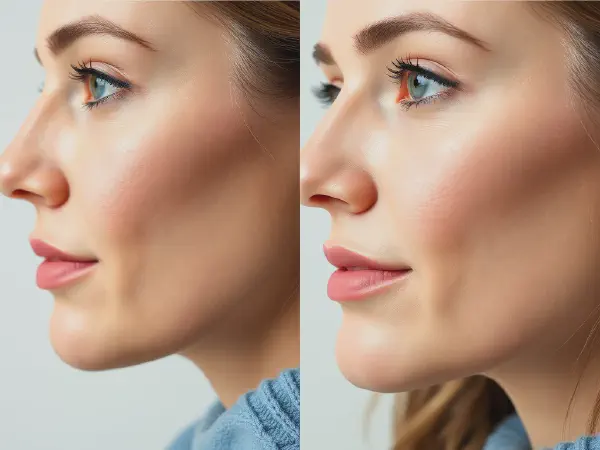Impressive Masseter Botox Before and After Transformations

Masseter Botox Before And After
Masseter Botox is a cosmetic treatment that has gained popularity for enhancing jawline definition and alleviating discomfort from conditions like teeth grinding. Understanding the ins and outs of Masseter Botox Before and After can help individuals make an informed decision about this procedure.
Many people consider Masseter Botox Before and After as an essential guide to evaluating the transformation they can expect. With proper administration, Botox can effectively reduce the size of the masseter muscle, leading to a slimmer and more contoured jawline. This treatment is not just about aesthetics; it can also provide relief from tension headaches and jaw pain.
The journey of Masseter Botox Before and After showcases significant changes not just in appearance but also in the quality of life for many patients. As a minimally invasive treatment, it has become a go-to solution for people looking to refine their jaw structure without undergoing surgery. Additionally, many individuals report increased confidence following the procedure.
Many patients are amazed by the transformations they see in the results of Masseter Botox Before And After photos.
In the context of Masseter Botox Before and After, it's crucial to highlight the understanding of how the procedure works. Patients should be aware of the consultation process, the injection technique, and post-care; all these factors contribute to a successful outcome. The results, both aesthetic and therapeutic, can be remarkable when the treatment is performed by a qualified practitioner.
In this article, we will delve into various aspects of Masseter Botox Before and After, from understanding the treatment and the injection process to real-life results and maintenance tips, ensuring a comprehensive understanding for prospective patients.
Understanding Masseter Botox
Masseter Botox involves injecting botulinum toxin into the masseter muscle, which is located at the back of the jaw. This muscle is responsible for chewing and clenching. When Botox is injected, it temporarily weakens the muscle, resulting in a reduced size and a more refined facial contour.
The way Masseter Botox works for jawline enhancement is by reducing the bulk of the masseter muscle. As the muscle shrinks, the jawline appears slimmer and more defined, offering a V-shaped face. This non-surgical treatment is ideal for individuals looking to improve their facial aesthetics without the need for invasive procedures.
The benefits of Botox in the masseter area extend beyond cosmetic improvements. It can help relieve symptoms associated with bruxism (teeth grinding) and temporomandibular joint (TMJ) disorders, leading to less jaw pain and tension headaches. Consequently, patients can experience both visual and therapeutic advantages from this treatment.
Pre-Treatment Considerations
The consultation process for Masseter Botox involves discussing the patient's goals, medical history, and any current medications. It's important for practitioners to assess whether the candidate has any contraindications and to set realistic expectations regarding the results.
A suitable candidate for Masseter Botox is typically someone who desires a more contoured jawline or suffers from jaw-related issues. Individuals who experience excessive teeth grinding or have a prominent masseter muscle can greatly benefit from this treatment.
Potential risks and side effects of Masseter Botox are minimal but may include temporary swelling, bruising, or discomfort at the injection sites. In rare cases, patients might experience weakness in surrounding muscles, leading to complications. Discussing these risks during the consultation is essential for informed consent.
The Injection Process
During the procedure, patients can expect a quick and relatively painless experience. A skilled practitioner will apply a local anesthetic to minimize discomfort, followed by the injections into the masseter muscle. Usually, it takes about 20-30 minutes to complete the treatment.
The technique used for masseter injections typically involves multiple small injections in predetermined areas of the muscle. This method ensures that the Botox is evenly distributed, resulting in a balanced reduction of muscle size. Practitioners often use a fine needle to ensure precision.
Recovery time is minimal, and patients can resume normal activities immediately after the procedure. Aftercare tips include avoiding strenuous exercise or excessive facial manipulation for the first 24 hours. Patients should also remain upright to facilitate the settling of the Botox in the injected area.
Before and After Results
Real-life case studies of Masseter Botox illustrate the effectiveness of the treatment. Many patients report a noticeable difference in their jawline within a few weeks after the procedure. The transformation is often dramatic, leading to a more youthful and appealing facial silhouette.
Visual transformations are significant when comparing Masseter Botox Before and After images. Patients frequently show a slimmer jawline and a more contoured appearance, which can boost self-esteem and confidence levels.
Patient testimonials and experiences reveal that those who undergo Masseter Botox often describe their satisfaction with both the process and the results. Many report improvement in both aesthetic appearance and relief from jaw-related discomfort, highlighting the dual benefits of the treatment.
Longevity and Maintenance
The results of Masseter Botox typically last between three to six months, depending on individual factors like metabolism and the amount of Botox used. Regular maintenance sessions are crucial for sustaining the results over time.
Follow-up treatments are important to maintain the desired look. Patients are usually advised to return for another session before the effects completely wear off to preserve a consistently defined jawline and continued relief from symptoms.
Tips for maintaining results include adhering to a healthy lifestyle, such as regular exercise and a balanced diet, as well as minimizing teeth grinding habits. Using stress-reduction techniques can also contribute to the longevity of the treatment results.
